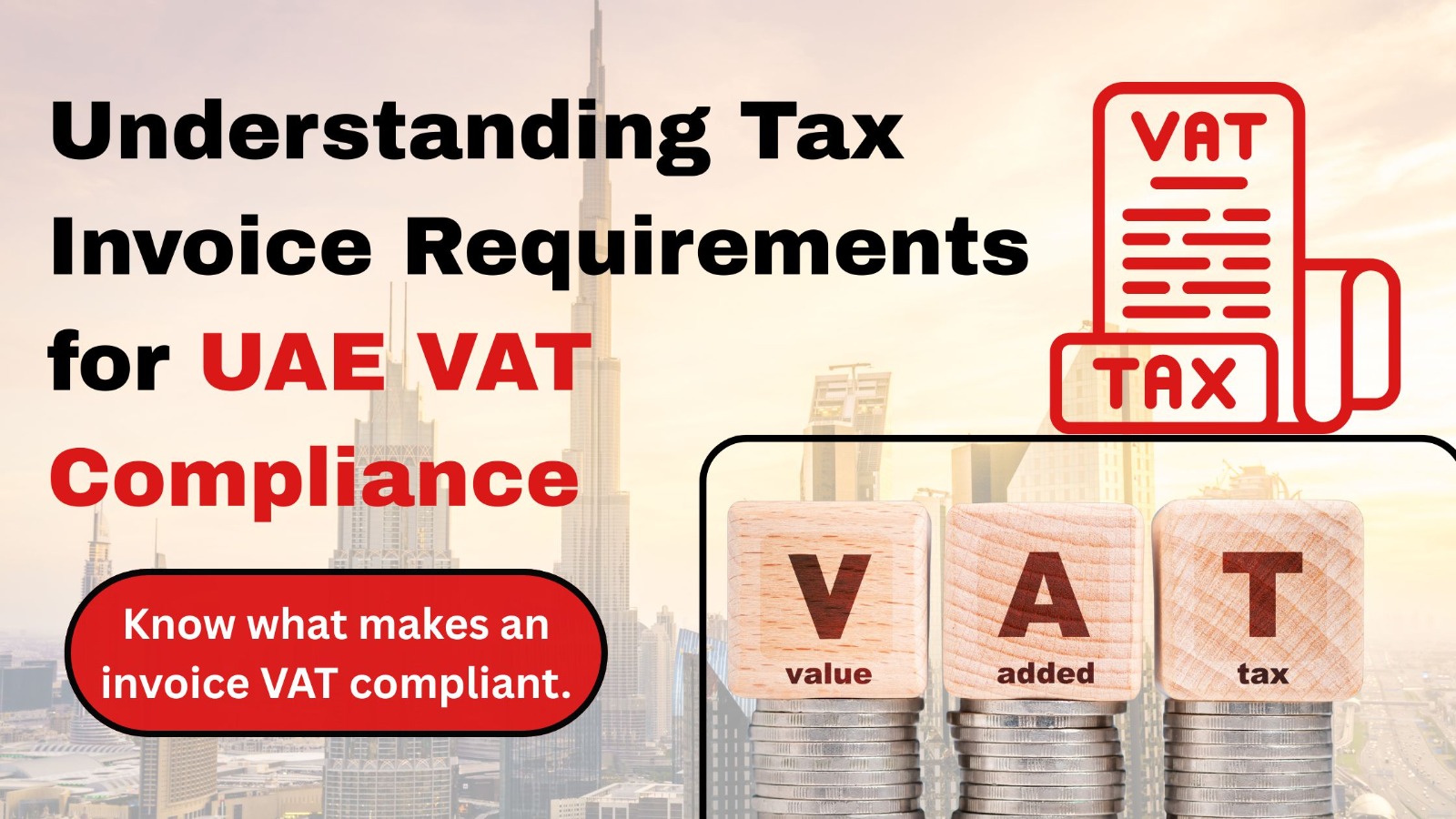For VAT compliance in the UAE, proper issuance of a Tax Invoice is one of the most significant obligations for both suppliers and recipients. A correctly formatted Tax Invoice not only guarantees compliance with the UAE VAT Decree-Law and Executive Regulations, but is also a critical factor for establishing the recipient’s eligibility to claim Input VAT Credit.
This is what to review in a procurement invoice (the supplier/vendor invoice), and offers a comprehensive checklist for verification.
Understanding Why a Tax Invoice is Important
Under the Federal Decree-Law No. (8) of 2017 on Value Added Tax (VAT), a Tax Invoice is an official record of a taxable supply. It establishes:
- The supplier’s liability to collect and remit VAT; and
- The recipient’s right to recover Input VAT (if eligible).
However, you can only claim Input VAT Credit by submitting a Tax Invoice which fulfills VAT requirements. A Tax Invoice that is incomplete and/or does not comply with requirements may result in denied VAT claims during audits or assessments by the Federal Tax Authority (FTA).
Procurement Invoice (Supplier/Vendor Invoice): Important Points
When a business buys goods or services, the supplier sends a procurement invoice which is also known as a vendor invoice. A procurement invoice must be a Tax Invoice under VAT law.
To ensure alignment, the accounts payable or finance function should have an adequate review process before the invoice is booked or VAT is claimed. Make sure to always choose the best Accounting firm in Dubai for proper tax invoice compliance under UAE VAT legislation.
A Tax Invoice that does not comply with VAT regulations may lead to consequences, including:
- Input VAT credit is being disallowed,
- Fines being imposed, or,
- Increased scrutiny from the FTA for alignment.
Tax Invoice Review Process Checklist
As a established VAT consultants in UAE, here is a detailed checklist to help you review Tax Invoice compliance based on the UAE VAT Decree-Law, Executive Regulations and Public Clarifications, including VATP006 & Cabinet Decision No. 7 of 2019 on Tax Invoices and Credit Notes.
Tax Invoice Compliance Checklist:
- The words ‘Tax Invoice’ must be featured, and this must be clearly marked.
- The business’s legal name should match the name in the business’s registration.
- If there has been sufficient identification of a mailing address, the physical address is not required (Decision No. 7 of 2019).
- For the business’s Tax Registration Number (TRN), please obtain a copy of the vendor’s VAT registration certificate.
- Sequential or unique invoice numbers should be used to enable tracking and identification.
- If a combination of invoice series, ideally followed all relevant supporting documentation, please ensure that the numbering is consistent amongst each invoice.
- It is a requirement that the name of the recipient of the goods and/or services corresponds with an established purchaser’s VAT registration.
- An address of the recipient is required, although a physical address is not required if the address exists for the purposes of mailing; the address must be identifiable as a mailing address.
- For B2B supplies, TRN of a recipient is a requirement if a registered recipient in the UAE.
- The description of the goods and/or services supplied must contain such detail so as to ascertain the nature of the supply.
- The applicable VAT rate on every line item must be appropriately identified either at 5% (standard) or legislation allows at 0%.
- The amount payable (excluding VAT) on all line items is a requirement as per Public Clarification VATP006.
- The VAT amount payable (in AED) for each line item is optional; VATP006 allows the VAT charge to be reflected as total.
- The total gross amount payable (in AED) can be shown as total for the invoice rather than calculating VAT on each line item provided as an itemized invoice (VATP006).
- On the invoicing document, the total VAT amount payable per the sale is to be reflected (in AED) to ensure the total amount is disclosed.
- When applicable, where the recipient is to account for tax (reverse charge), please mention the relevant Decree-Law provision.
- Rounding rule on each line item is to the nearest fils (2 decimals) as per VATP006.
Key Takeaways on FTA’s Public Clarifications
The Federal Tax Authority (FTA) has released Public Clarification VATP006, highlighting:
- The need to round the VAT amount on a line item basis.
- The need to include the amount payable (excluding VAT) for each good/service.
- The option to show the gross total VAT and total amount payable at the bottom of the invoice rather than for each separate line item.
- These clarifications provide consistency to invoicing formats and help to resolve disputes in matters relating to an Input VAT audit.
Entitlement to Input VAT Credit
For the recipient to claim Input VAT:
- The recipient must have a valid Tax Invoice.
- The goods or services must be for business use.
- The supplier must be a VAT-registered person, and the VAT charged must meet the requirements of the law.
- The VAT amount must be accounted for in the VAT return, i.e., submitted in a timely manner.
- If any of the pre-requisites are not met, in particular when it comes to the invoice compliance, it could result in non-claim of Input VAT.
Conclusion
Aligning with UAE VAT Tax Invoice requirements is more than just the need of the hour; it’s a key adherence to obligate that proportionately affects your ability to claim Input VAT credit. All businesses must ensure that every procurement invoice from vendors meets FTA’s prescribed standards, as non-aligned invoices can result in financial penalties and disallowed credits.
Maintaining a methodological review checklist and adherence to internal controls with FTA clarifications and decisions will ensure smooth VAT audits and hassle-free credit claims.
